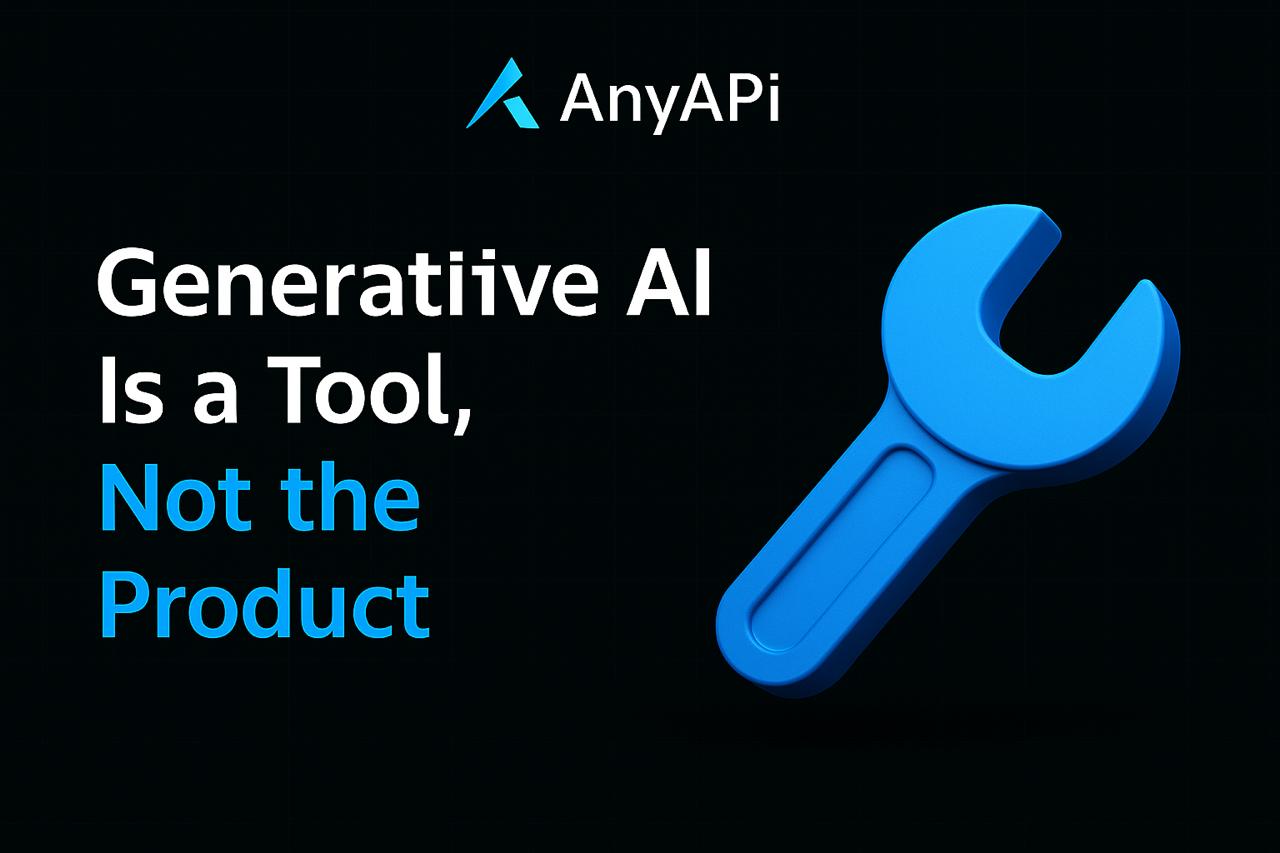Building with Generative AI: What Dev Teams Need to Know in 2025

You’ve seen the demos. AI that writes code, generates images, drafts emails, even answers legal questions. But beyond the buzz, most teams still wrestle with one question: How do we use generative AI to actually build something that works?
In 2025, generative AI isn't magic. It's infrastructure. It powers SaaS apps, co-pilots, workflows, and full-blown platforms. Whether you're using open-source models or hosted APIs, the real opportunity is the same: building products that remove friction and unlock leverage.
This article breaks down what generative AI is, how it fits into modern software stacks, and what builders need to know to ship faster with fewer unknowns.
What Is Generative AI? (And What It’s Not)
Generative AI refers to models that produce new content – text, code, images, audio, even video. These models don’t just classify or predict; they create. The underlying tech is usually a neural network trained on massive datasets. Think transformers (like GPT or Claude), diffusion models (for images), or autoencoders.
But here’s what generative AI isn’t:
- It’s not deterministic. Output varies even with the same prompt.
- It’s not reliable without guardrails. Expect hallucinations and misfires.
- It’s not plug-and-play. You need thoughtful UX and integration to make it useful.
Why Generative AI Is Different from Traditional AI
Traditional AI systems handle classification, regression, or recommendation tasks. They answer: Is this spam? Will this customer churn? What product to show next?
Generative AI answers a different question: What can I create from this input?
The result is open-ended. It requires:
- Prompting instead of rules
- Few-shot or zero-shot learning
- Probabilistic reasoning instead of hard-coded outputs
In short: you’re designing systems that behave more like collaborators than calculators.
Common Generative AI Use Cases in 2025
Generative AI is no longer just about text. Developers and startups are using it in:
- Productivity tools: AI summarizers, writing assistants, meeting note takers
- Developer platforms: Code suggestions, doc generators, agent workflows
- E-commerce: Smart product descriptions, personalized recommendations
- Design and media: Image generation, brand kits, voice cloning
- Customer support: Chat agents, ticket drafting, knowledge base search
Example: A SaaS startup uses an LLM to auto-generate tailored onboarding sequences for each new user based on usage data.
Under the Hood: How Generative AI Works
At a high level, generative models learn statistical patterns in massive datasets and then sample from those patterns to create something new.
- LLMs (Large Language Models) predict the next token based on previous tokens
- Diffusion models denoise random input to generate coherent images
- Multi-modal models combine text, image, and audio inputs/outputs
Most developers won’t train these models from scratch. Instead, you’ll:
- Use APIs from OpenAI, Anthropic, or Cohere
- Fine-tune open-source models like Mistral or LLaMA 3
- Add retrieval-augmented generation (RAG) for grounding
- Wrap models in agents, apps, or tools with clear UX
The Technical Stack for Generative AI Products
To go from prototype to product, here’s the typical stack:
- Frontend: React, Vue, Swift (with real-time feedback and input shaping)
- Backend: Node, Python, Go (model orchestration, logging)
- LLM access: OpenAI SDK, Hugging Face Transformers, or REST APIs
- Vector search: Pinecone, Weaviate, Qdrant for retrieval grounding
- Data infra: Postgres, Firestore, Redis, S3 for inputs/outputs
- Observability: Langfuse, Helicone, or custom analytics
And yes—you’ll want robust rate limiting, fallback models, and fail-safe UIs.
Developer Mindsets: Building with LLMs in Production
Working with LLMs is unlike traditional backend engineering. You’ll need to:
- Experiment quickly: Prompt engineering is part art, part science
- Test with users: Real feedback > internal QA
- Design for uncertainty: Model outputs are probabilistic
- Log everything: Inputs, outputs, latencies, errors
Use case: A dev team adds prompt versioning + A/B testing to fine-tune how a summarization feature performs across industries.
Key Challenges (And How to Solve Them)
- Latency: Use smaller models, cache outputs, or pre-generate results
- Hallucinations: Add retrieval (RAG), constrain prompts, or use rules
- Cost: Optimize token usage, truncate inputs, or use open models
- Drift: Monitor and update prompts/models over time
Generative AI doesn’t eliminate bugs – it just changes their shape.
Generative AI Is a Tool, Not the Product
Too many teams get distracted by novelty. But in 2025, the winners are builders who use generative AI to reduce friction, increase leverage, and ship products people actually use.
Generative AI is powerful, but it works best when wrapped in strong UX, business context, and shipping velocity.
At AnyAPI, we help technical teams connect to LLMs, orchestrate model calls, and deploy AI-native features with less boilerplate. If you're building with generative AI, start with tools that scale with you.
FAQ
What’s the best LLM to start with in 2025?
Start with GPT-4o or Claude 3 for general-purpose tasks. Use open models (like Mixtral or LLaMA 3) if you need control or low latency.
Should I fine-tune a model or use RAG?
Start with RAG (retrieval augmented generation). Fine-tune only if you have domain-specific data and accuracy matters.
How do I monitor AI features in production?
Log prompts, outputs, latencies, errors, and user feedback. Tools like Langfuse, PromptLayer, or OpenTelemetry can help.
Is it too late to start building with generative AI?
Not at all. It’s still early days. But successful teams focus on workflows, not novelty. Build something real – and ship it fast.





